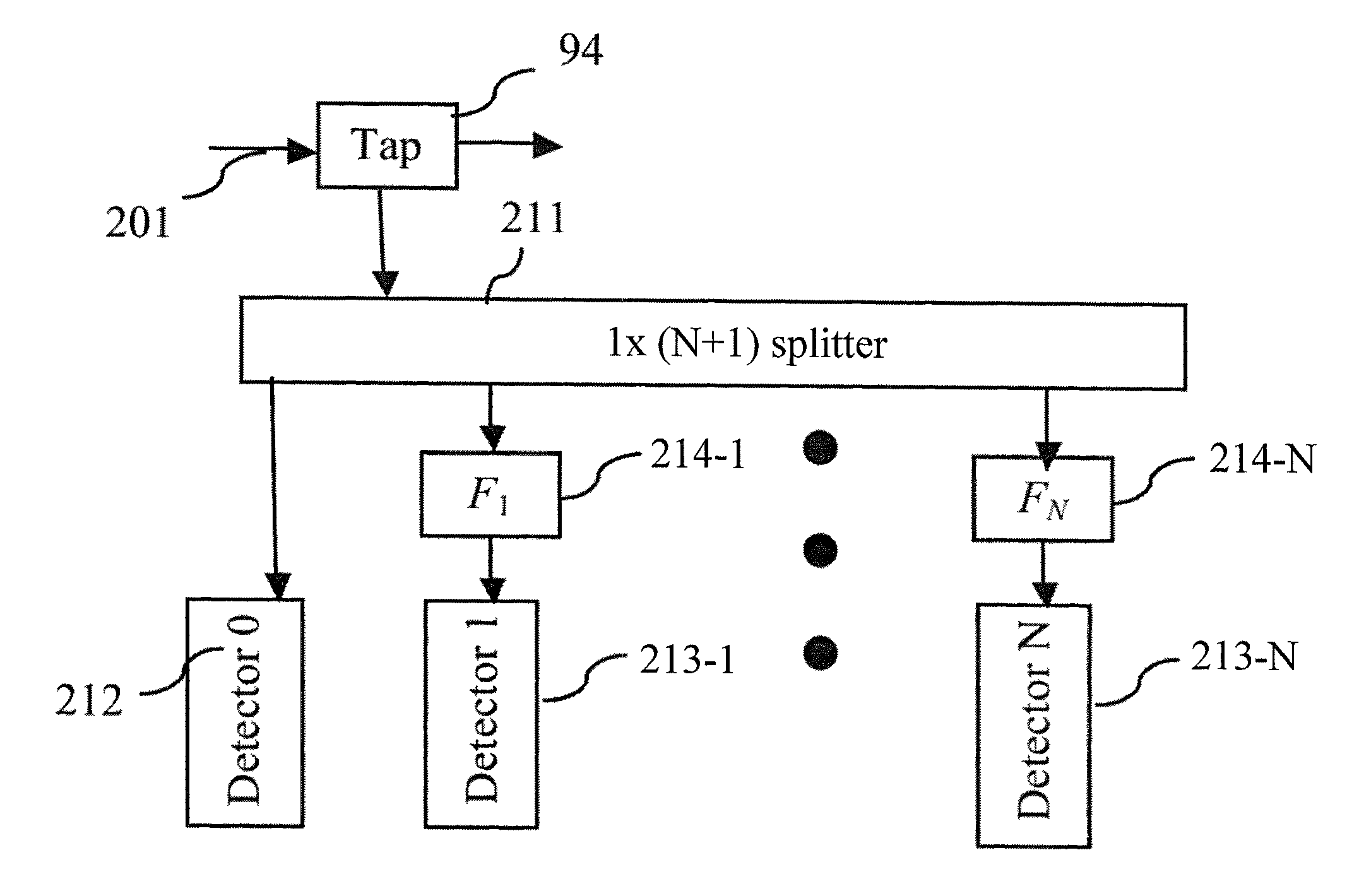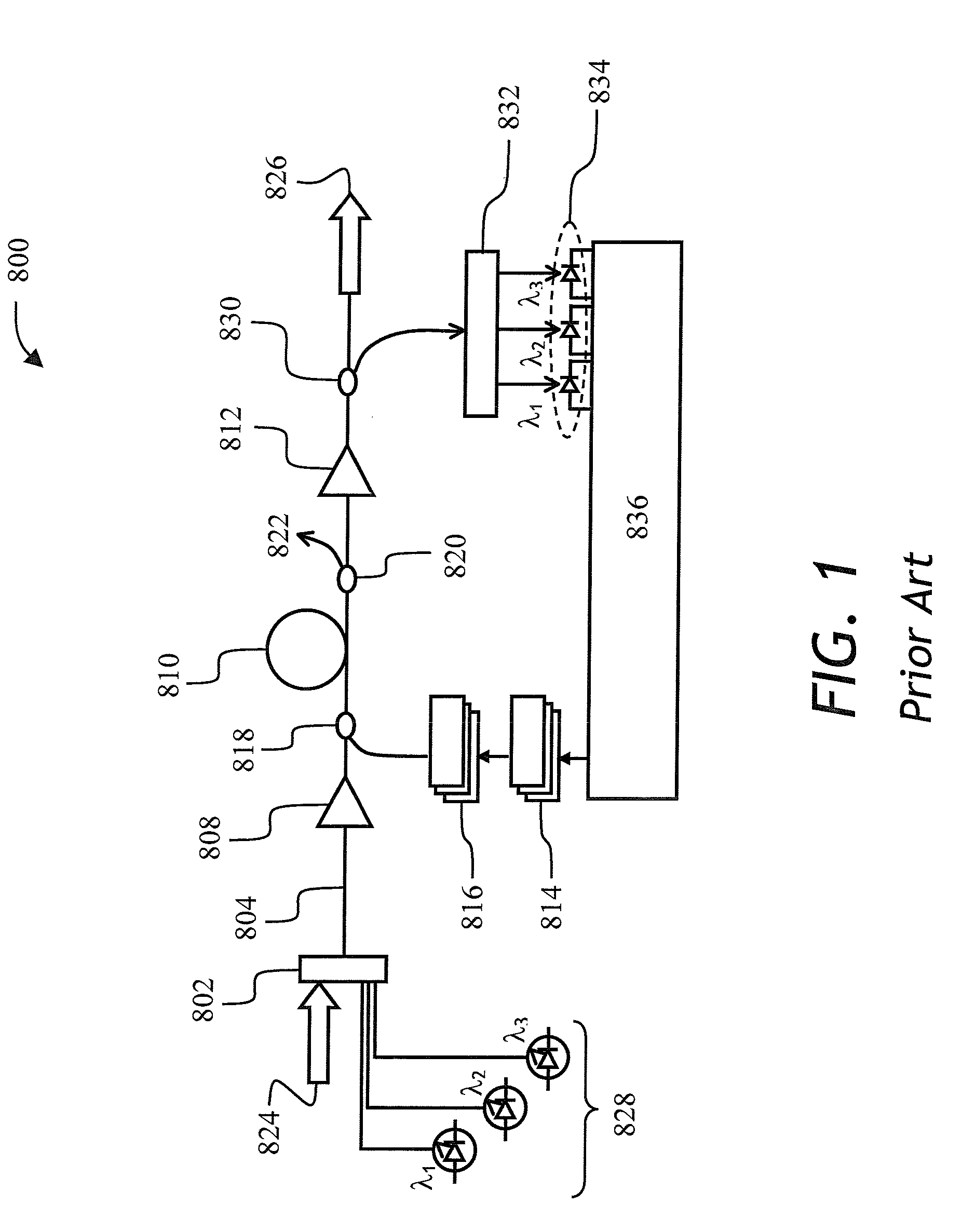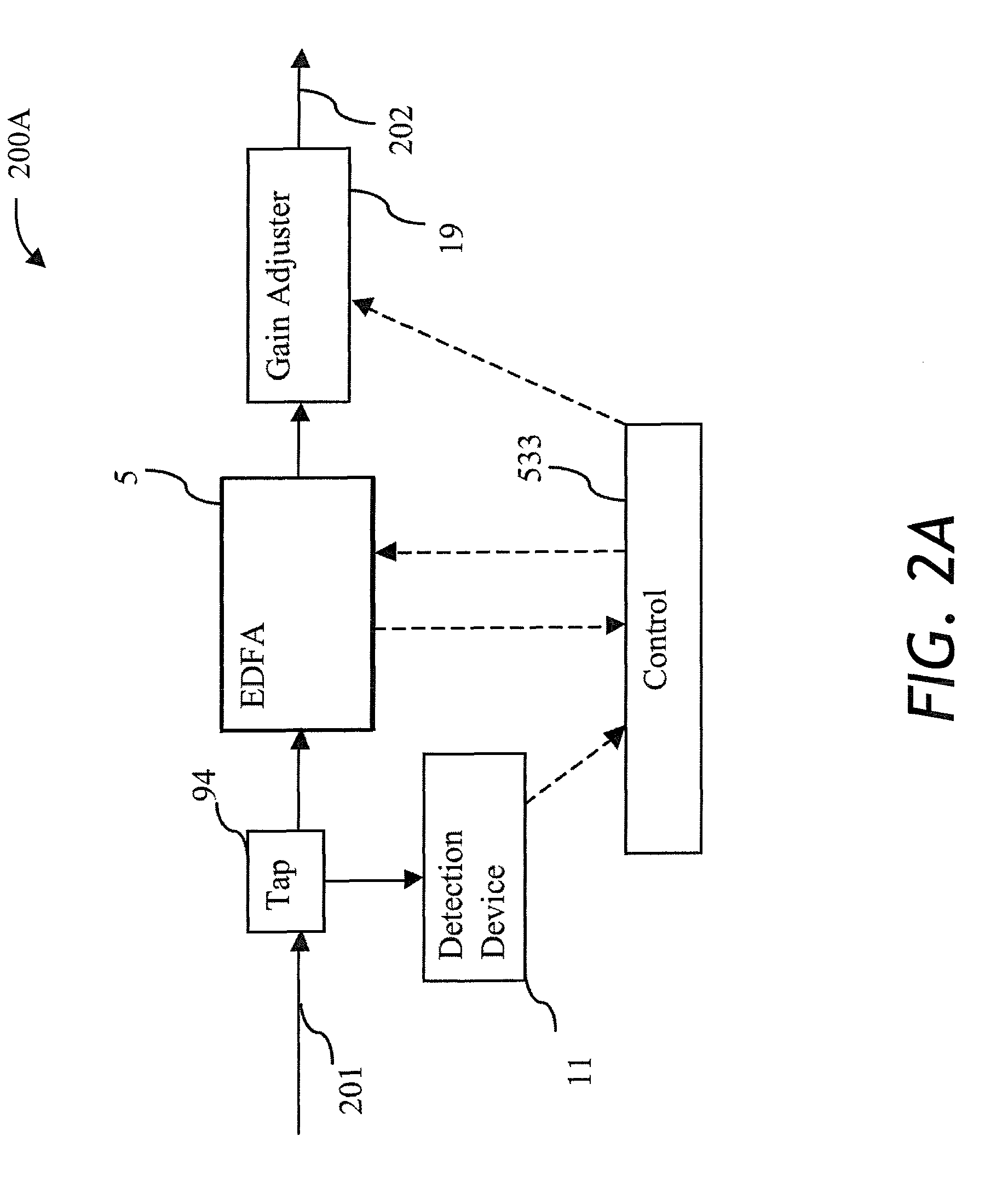Apparatus and method for flattening gain profile of an optical amplifier
a gain profile and optical amplifier technology, applied in the field of optical fiber amplifiers, can solve the problems of light prone to lose power, effective limits the amount of optical amplifiers a transmission link, variation of signal load at the input of the amplifier, etc., and achieve the effect of increasing the flatness of the gain profil
- Summary
- Abstract
- Description
- Claims
- Application Information
AI Technical Summary
Benefits of technology
Problems solved by technology
Method used
Image
Examples
Embodiment Construction
[0038]While the present teachings are described in conjunction with various embodiments and examples, it is not intended that the present teachings be limited to such embodiments. On the contrary, the present teachings encompass various alternatives, modifications and equivalents, as will be appreciated by those of skill in the art.
[0039]Referring to FIG. 1, a prior art hybrid optical amplifier 800 is shown comprising a multiplexor 802, a first erbium doped fiber amplifier (EDFA) 808, a span of dispersion compensated optical fiber (DCF) 810, a second EDFA 812, three Raman pump diode lasers 816 emitting pump light at differing pump wavelengths, a Raman pump in-coupler 818 for coupling the Raman pump to DCF 810, and a Raman pump out-coupler 820 for removing a residual Raman pump light 822. An incoming multi-wavelength signal 824, carried by many optical fibers, is multiplexed by multiplexor 802 to propagate in a single optical fiber 804 coupled to amplifier 808. After amplification by...
PUM
 Login to View More
Login to View More Abstract
Description
Claims
Application Information
 Login to View More
Login to View More - R&D
- Intellectual Property
- Life Sciences
- Materials
- Tech Scout
- Unparalleled Data Quality
- Higher Quality Content
- 60% Fewer Hallucinations
Browse by: Latest US Patents, China's latest patents, Technical Efficacy Thesaurus, Application Domain, Technology Topic, Popular Technical Reports.
© 2025 PatSnap. All rights reserved.Legal|Privacy policy|Modern Slavery Act Transparency Statement|Sitemap|About US| Contact US: help@patsnap.com



